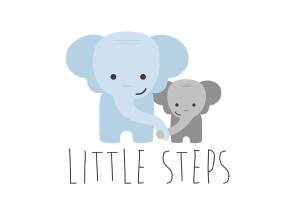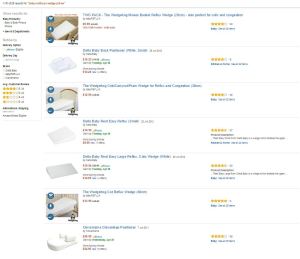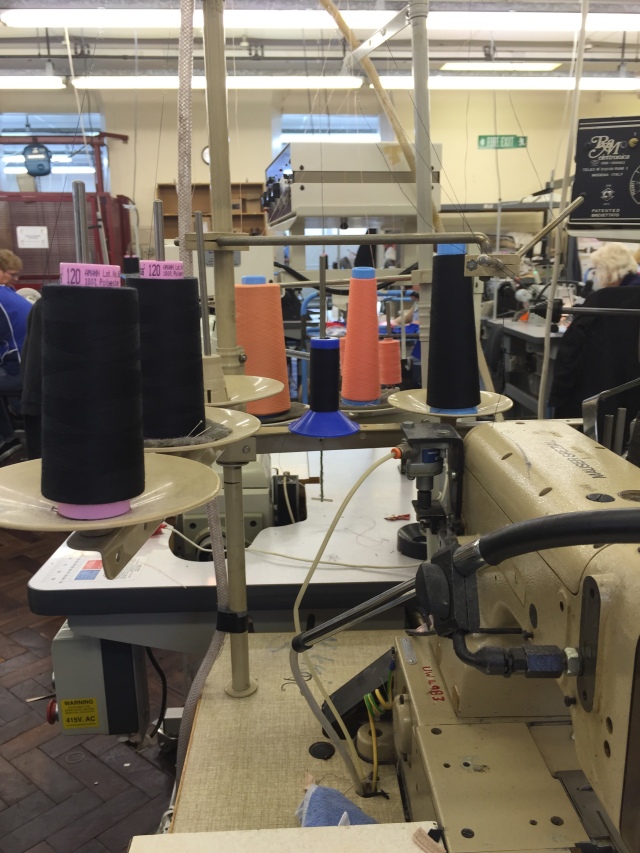This year has gone by very quickly, and I’m sure everyone on the course would agree with me when I say it has had its ups and downs. While it was not entirely what I expected, I did, when all was said and done, learn an incredible amount. The purpose of this final blog entry is to take the advice of Peter Drucker and reflect on our lean start-up journey, sharing some of the experiences and lessons learned, within key categories.
Creating a team and generating ideas
Prior to sitting down and brainstorming, we had to form a team. Fortunately, this could not have worked out better for me. The group that ended up developing into team Little Steps is made up of people who I now truly adore and respect and I think of myself as fortunate to have met. Uh, I mean… yeah… they’re all OK, I suppose. As mentioned in my post linked to this subject, I didn’t really think ahead about the team formation and just went with the flow. While I did luckily end up on a solid, effective team, this was my first real insight into the start-up process and the importance of choosing the right team is definitely a crucial lesson. Our team was chosen based on personality but more so on skill set – who was able to contribute what. We ended up with a combined experience in interior architecture, graphic design, marketing, copywriting and new media management. This allowed us to cover all aspects of the product ideation and development process. This diversity within the team is a crucial aspect of choosing a good team (Elvekrog, 2014) and the fact that we all got along so well was also valuable as we were able to have dynamic and open discussions and everyone was able to both provide, and receive critical feedback. In addition, the fact that everyone can be creative, and everyone has ideas (Kelley and Kelley, 2013) meant that these ideas were being generated from a diverse source, which is important for innovation. As the Co-founder and CEO of 140 proof also said:
“You succeed or fail not on the strength of your idea or your product, but on the strength of your team. “ (Elvekrog, 2014)
Once we had established our team it was time to sit down and brainstorm ideas for our product. We began this with a strategy we had learned in class, that much like the Purdue Creative Thinking Program, involves fluency and just thinking of as many ideas as quickly possible initially, then narrowing these down to the best before elaborating (World.std.com, 2001). Our ideas ranged from a fashionable bag for the cycling commuter to a “smart” medical alert bracelet, and everything in between. The open and collaborative environment we had already fostered as a group meant that we were able to express ideas without fear of judgement from others, which is vital in the ideation stage (Brown, 2008). In the end, however, most these ideas were taken off the table because of the time and money restraints imposed by the course. At first we thought this was a little unfair and not necessary but later I think we appreciated it as it placed restrictions on our ideas – I have found that creativity is very difficult when there are no restrictions or challenges. Through a fair amount of brainstorming, market research and observation we finally settled on our product and team name.
Developing a brand and persona
The next step, or perhaps simultaneous step, was to come up with a persona for our target audience from which we could then develop a suitable brand and marketing strategy. To do this we used several tools provided by our professor, in addition to other resources. These were of great help in getting us to think of, and answer certain questions about the type of people we wanted to sell to. With these aids we were able to create our persona, Jennifer, a new mum in her 30’s who is active, supports natural treatments, is health conscious and internet savvy.
This crucial step allowed us to relate to our consumer, and better understand them. We were able to role play as our persona during the entire process when discussing branding, marketing and product development in order to ensure we were always meeting the needs of our target audience. Coming from an architectural design background, empathy and designing for a need were concepts I was familiar with, but the use of role play in order to achieve them was not something I had previously considered. It proved very beneficial and ultimately created a greater sense of empathy with our audience, which leads to better, more authentic, and genuine design outcomes (Brown, 2008). Storytelling and role play are both definitely learnings that I will carry forward.
Once we had our persona finalised, we were then able to develop our branding and marketing strategies to best have an impact on our target consumer. We started by creating a logo that represented maternal instincts (elephants are amongst the most maternal creatures) but also expressed the modern aesthetic of Little Steps. This was followed by more research, learning, and development until we had a strategy that we believe fell in line with our ethos and also was most effective to create a brand behind our product. As The Ella was not really some completely new invention, we differentiated ourselves from the competition using this brand, and the support, personal touches, attention to detail, and buying experience that came with it. Developing this brand and using it to differentiate ourselves was a great learning experience. Being able to understand the consumer and what they want from, and value in a product is something that will definitely be useful in the future.
Developing the product
While we were developing the brand, we were also concurrently prototyping our product. Due to the iterative nature of this process, it was very time consuming. We were all very concerned with ensuring it met the needs of the consumer. The time we took to finalise the prototype meant that we were a little behind schedule in terms of actually getting it manufactured. Once we did get around to that, we began to encounter problem after problem. This did mean, however, that we also learned lesson after lesson. The first of these being the actual cost of producing any tangible product, especially in the UK. We quickly realised that our £1000 just wouldn’t cover the cost of a minimum production order. We knew we had to change something, somewhere and fortunately, at around the same time, our market research had uncovered another issue (getting the product to parents in time when the child is sick) and thereafter a solution that solved both our problems. It was at this point that we accepted the flaws in our original idea, learned from our mistakes, and pivoted the product slightly (image below). We then carried this redesigned Ella on to the final dragon’s den competition, where our understanding of the consumer and the branding around that were highly commended.
A large part of design thinking, to me, is being ok with making mistakes. In fact, I want to make mistakes (within reason, of course) because you are able to learn from them. If we were to have made the perfect product and never erred, we would not have learned as much from this course, or indeed from life in general. The controlled and accepting environment within which this course sits is perhaps its greatest feature. We were given the independence and space to make mistakes, then the advice and support to go about correcting, and learning from them. In an interview with Scott Adams he said that when starting a business one needs to be accepting of change, and know when to quit (Boitnott, 2014). Up until now, failure to me was not something I even wanted to think about. Now, however, it’s something I welcome (again, within reason) and I would like to think that in the future, I will make more mistakes, but out of those mistakes I will be able to achieve everything I set out to.
Success, Failures and future goals
Looking back after it’s all said and done makes it easy to see what we did well and what we did… not so well. I have already mentioned our initial design shortcomings and the reasons they came about, but that was not the only time we admittedly fell short. One of the biggest challenges we faced was manufacturing. We severely underestimated both the cost, and time that would be required to produce our product. Having spent a lot of time prototyping we then had to rush to find a manufacturer who would satisfy our requirements. We ended up having to pay extra to have products produced quicker, cutting into our profits during sales. Related to this is the variance in manufacturers. During our prototyping we tried to both make it ourselves and also have a professional make one. As we had not really finalised our design, this was perhaps the wrong approach as we ended up spending a significant amount paying someone to make a prototype that really was not of excellent quality, mostly because the materials and design we had at that stage were not conducive to that particular production method. Through this exploration into manufacturing, however, we did learn a lot, both about the UK manufacturing industry and all its variance, as well as about our product itself and the intricacies of its production.
So yes, we made mistakes, but the important thing is that we learned from them and we did also have some success. We did make a few sales, and put smiles on people’s faces (below) and we did also get commended for our product and presentation skills at the final dragons den. More than that, however, are the successes that perhaps are subjective, and depend on your definition, or measure, of success. As Miguel de Cervantes wrote “the journey is better than the inn” (Cervantes Saavedra, Jarvis and Riley, 2008) meaning the path to a destination/goal is better/more important than the destination itself. To me, our journey is where we found most of our success. We In addition to everything we learned along the way, all the new experiences we were involved with, and all the contacts we made with manufacturers and other external businesses, we also made friends. To me, and I believe with several others, our biggest success, and the most important take away from this course in particular is the network of peers and friends that we made. Every single one of us came from a different background, culture, and country and the fact that we all got along, developed relationships and an eagerness to help each other is going to be a great asset in both our future professional and personal lives. That, if your definition of the word allows for it, is what I think is my biggest success.
So where does this whole experience leave me? Our course professor once said that connecting thoughts to a future goal is the difference between reflection and reminiscing (Beaumont, 2014). This reference is more than me just trying to get an A, it actually struck a note with me because I’m usually the type of person who prefers to take each day as it comes, not really thinking too far in the future. On this occasion, however, I did think into the future, specifically how I could take what I have learned during my time at Kingston University and apply it to achieving my goals. My short term goal is to open a creative multimedia agency. The confidence I have gained in myself during presentations and networking events will be crucial to accomplish this as I will need to build my clientele from the ground up. As a more long term goal, I am aiming to open my own microbrewery and restaurant. My existing design background would have always allowed me to design the space and the experience but this course and everything I have learned about design thinking, branding and marketing will allow me to get a better sense of my target audience and so design a better thought out, more empathetic, overall experience, from start to finish.
References
Abasov, M. (2013). Complete Guide to Creating a Customer Persona for Your Startup – Marketing Before Funding. [online] Marketingbeforefunding.com. Available at: http://marketingbeforefunding.com/2013/02/26/complete-guide-to-creating-a-customer-persona-for-your-startup/ [Accessed 23 Apr. 2015].
Beaumont, C. (2014). Assessments. [Blog] Designing a Business (design thinking + lean startups). Available at: https://macekingston.wordpress.com/assessments-201415/ [Accessed 23 Apr. 2015].
Boitnott, J. (2014). Scott Adams of ‘Dilbert’ on the Importance of Making Mistakes. [online] Inc.com. Available at: http://www.inc.com/john-boitnott/scott-adams-of-dilbert-on-the-importance-of-making-mistakes.html [Accessed 23 Apr. 2015].
Brown, T. (2008). Tales of creativity and play.
Available at: http://www.ted.com/talks/tim_brown_on_creativity_and_play [Accessed 23 Apr. 2015].
Brown, T. (2009). Designers – think big!.
Available at: http://www.ted.com/talks/tim_brown_urges_designers_to_think_big/transcript?language=en [Accessed 23 Apr. 2015].
Cervantes Saavedra, M., Jarvis, C. and Riley, E. (2008). Don Quixote de la Mancha. Oxford: Oxford University Press.
Elvekrog, J. (2014). Finding the Right Team to Lead Your Startup to Success. [online] Entrepreneur. Available at: http://www.entrepreneur.com/article/234648 [Accessed 23 Apr. 2015].
Esquivel, M. and Kleiner, B. (1997). The importance of conflict in work team effectiveness. Team Performance Management: An International Journal, [online] 3(2), pp.89-96. Available at: http://search.proquest.com.ezproxy.kingston.ac.uk/docview/217105723?accountid=14557 [Accessed 23 Apr. 2015].
Kelley, T. and Kelley, D. (2013). Creative confidence. New York: Crown Business.
World.std.com, (2001). projects | purdue creative thinking program. [online] Available at: http://world.std.com/~mehopper/Pro/PCTP.htm [Accessed 23 Apr. 2015].













